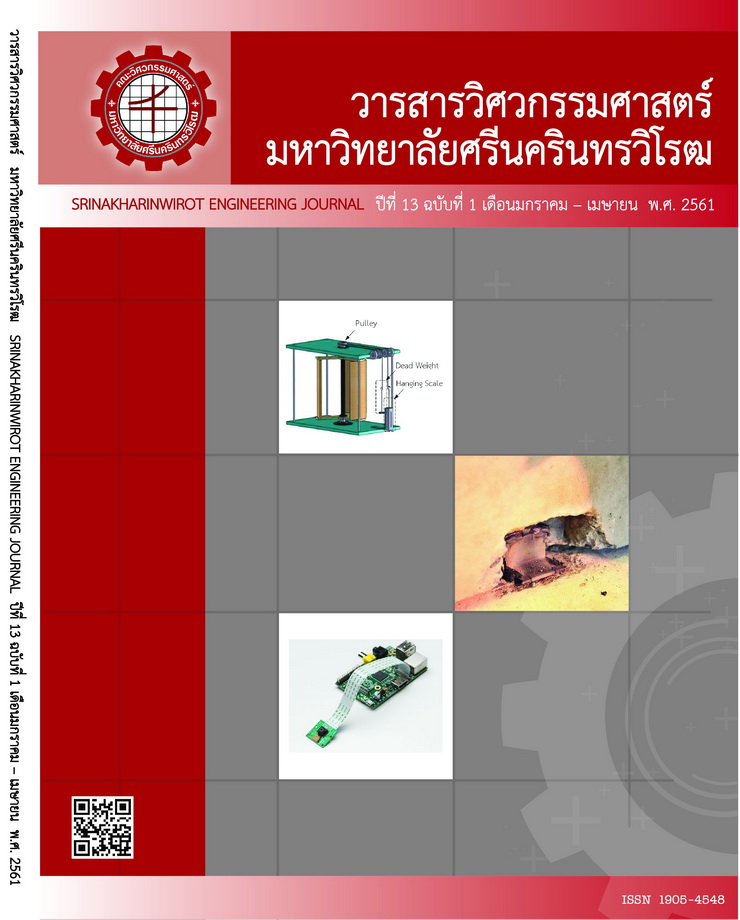Flood Peak Trend Analysis of the Major River Basin in Thailand
Main Article Content
Abstract
The purposes of this study were to determine the trends of flood peak discharge for 25 major river basins in Thailand. The annual maximum momentary discharge data from 447 gauging stations with more than 10 years of continuous records were collected from Royal Irrigation Department. The trends of discharge data were analyzed using the TREND model comprising of three methods; linear regression test, Spearman's Rho test and Mann-Kendal test with a significance level of p < 0.01, p < 0.05 and p < 0.10. Results revealed that using Mann-Kendal test showed no significant trend in 305 stations and significant trends in 142 stations divided into increasing and decreasing trends in 61 and 81 stations, respectively. The results of trend analysis using Spearman’s Rho test presented no significant trend in 302 stations and significant trends in 145 stations divided into increasing and decreasing trends in 65 and 80 stations, respectively. Finally, the use of linear regression test showed no significant trend in 360 stations and significant trends in 87 stations divided into increasing and decreasing trends in 39 and 48 stations, respectively. In conclusion, from all 25 river basins in Thailand, the increasing trends were found in eight major river basins, while the decreasing trends were shown in eleven basins. Three river basins indicated a similar number of stations showing same results of increasing and decreasing trends, and three major river basins did not show statistically significant trend.
Article Details
Copyright belongs to Srinakharinwirot University Engineering Journal
References
[2] H. B. Mann, “Nonparametric tests against trend,” Econometrical, vol. 13, no.3 pp. 245-259, Jul. 1945.
[3] M. G. Kendall, “Rank Correlation Methods,” 4th ed. London: Charles Griffin, 1975.
[4] S. Yue and C. Wang, “The Mann-Kendall Test Modified by Effective Sample Size to Detect Trend in Serially Correlated Hydrological Series,” WARM Journal, vol. 18(3), pp. 201-218, Jun. 2004.
[5] E. Kahya and S. Kalayci, “Trend analysis of streamflow in Turkey,” J. Hydrology, vol. 289, pp. 128-144, Apr. 2004.
[6] K. H. Hamed, “Trend detection in hydrologic data: The Mann–Kendall trend test under the scaling hypothesis,” J. Hydrology, vol. 349, pp. 350-363, Feb. 2008.
[7] C. Thepprasit, K. Kitparnitchrun, and K. Boonmee, “Trend Analysis of Extreme Rainfall for Bangkok,” The 20th National Convention on Civil Engineering (NCCE20), Pattaya, Chonburi, Thailand, Jul. 8-10, 2015. NNCE-417, pp. 1-6.


